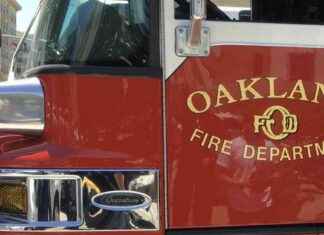On Sunday, December 10, the Israeli army tightened its grip on the south of the Gaza Strip, where hundreds of thousands of people are desperately trying to protect themselves from the fierce fighting with the Palestinian Islamist movement Hamas.
Early Sunday, Israeli aircraft carried out “very violent air raids” near Khan Yunis, and on the road between that town and Rafah, near the border with Egypt, the Hamas administration said. A journalist from Agence France-Presse (AFP) was able to observe these strikes. The Israeli army said earlier that it had “intensified” its operations in these areas of the southern Gaza Strip. “We must increase the pressure,” said army chief of staff Herzi Halevi, reporting a growing number of “killed” Hamas fighters.
At the very beginning of its ground offensive, the Israeli army asked the population of the north of the Gaza Strip to go to the south of the enclave. But with the intensification of fighting in the South, and after an American veto at the United Nations (UN) Security Council on a resolution proposing a cease-fire, fears are growing for the civilian population in the Gaza Strip. .
The American government approved, on Saturday, “urgently”, without going through Congress, the sale to Israel of nearly 14,000 120mm shells equipping the Merkava battle tanks engaged in the offensive against Hamas.
Rafah transformed into a vast refugee camp
Many of the 1.9 million Gazans who fled the fighting and bombs find themselves cornered in Rafah, transformed into a vast refugee camp. Diseases are spreading due to overcrowding and poor sanitary conditions in the shelters of the UN agency dedicated to Palestinian refugees (UNRWA) in the south of the territory.
“Nearly a million children have been forcibly displaced and are being pushed further and further south into tiny, overcrowded areas without water, food and protection,” said the UNICEF director. for the Middle East, Adele Khodr. “Restrictions on the delivery of life-saving aid through the Gaza Strip are an additional death sentence for children,” she added.
According to the Hamas health ministry, the death toll in Gaza exceeds 17,700, mostly women and children, since the start of the Israeli offensive. After a little more than two months of war, entire neighborhoods of the enclave are now fields of ruins and more than half of the homes have been destroyed or damaged, according to the UN.
Thousands of people have found shelter at Al-Shifa hospital, out of service after being evacuated by the Israeli army around two weeks ago, according to an AFP journalist. Displaced people have set up hundreds of makeshift tents made of fabric covered with plastic or nylon in gardens and courtyards.
The specter of a widening conflict
Tensions outside Gaza still raise the specter of a widening of the conflict. Iran, a key backer of Hamas, has warned of “the possibility” of “an uncontrollable explosion” in the Middle East, while Yemen’s Houthi rebels, backed by Tehran, have threatened to attack any ship in the Red Sea heading towards Israel if the people of the Gaza Strip do not receive the aid they need.
During the night from Saturday to Sunday, a French frigate shot down two drones in the Red Sea that were heading towards it from the coast of Yemen, the army general staff announced on Sunday morning. “The interception and destruction of these two identified threats” were carried out by the multi-mission frigate Languedoc. According to the army, the two interceptions took place on Saturday evening at 9:30 p.m. and 11:30 p.m. (French time), 110 kilometers from the Yemeni coast near the city of Hodeida.
On Israel’s northern border, exchanges of fire have increased between the Israeli army and the Lebanese Hezbollah movement, an ally of Hamas supported by Iran. A UN peacekeeping position in southern Lebanon was hit on Saturday without causing any casualties, the UN force said, adding that it was verifying the origin of the shots.






